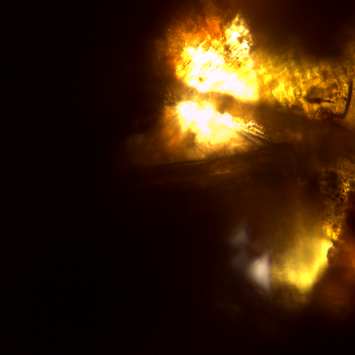'DECAY'
Final installation in DJCAD Degree show 2021
Decay (verb): (of organic matter) rot or decompose through the action of bacteria and fungi.
(noun): the state or process of rotting or decomposition.
Natural matter is transient, each state of change manifested in textures and scents. In this work, human intervention attempted to momentarily pause this cycle of deterioration.
Distilled 'rotting' scents and organic matter from different paper-making stages were collected in the glass jars and test tubes. Visceral reactions to the scents could not be accurately articulated: limited olfactive vocabulary in Western languages mean catachresis and 'source-naming' often occur. Metaphorical language was used instead to encapsulate a response to the scent, the textual ambiguity allowing for further scents interpretations.
Leaves, grass and moss were collected, destroyed and re-formed in the paper-making process: a coercion of organic matter into unnatural forms. These forms had thing power: an amplified presence which questioned the assumed human authority over the matter. Their square shape and circular shapes reflect the interconnectedness of humans and nature, described by Jane Bennett as 'the complicated web of dissonant connections between bodies'.
Forms returned to the ground completed the disrupted cycle. Andy Goldsworthy stated: 'each work grows, stays, decays- integral parts of a cycle'. Pausing the cycle was impossible. The preserved matter, assumed to be stable, quietly changed through evaporation, fragmentation and new growth.
It continues to do so.
'DETERIORATION'
2020-2021
Research/supporting work for Emily's final 'Decay' installation in the DJCAD Degree show 2021.

'FRAGILE FORMS'
2019-2020
The existence of the paper lies in layers of textures, scent and hidden processes. The fragile forms are accumulations of actions. The verbs list highlights the reconfiguration of natural matter, encapsulating a series of decisions and biological processes. The full-bodied scent marked the transformation of pulp to paper; a mechanical, chemical and biological pivot in the process. The scent formed a language which heightened the experience of touch and sight.
The flat, wet paper changed into sculptural forms whilst air drying. Returning the paper back to its origin allowed the disrupted deterioration process to be continued. The estimated rotting time was 3 weeks, but this was extended to over six centuries by the plastic bucket, blender, blankets, J-cloths, pot, netting, press and human (me) used to create it.
- E.Atkins

'70 STEPS'
2019
‘By putting one foot in front of the other, allowing each foot to touch the ground before lifting the next’.1
The concept of a walk, particularly in the discovering of a landscape, offers an inexhaustible amount of detail which accumulates into the physical, experienced landscape. Georges Perec’s ‘An Attempt at Exhausting a Place in Paris’ (1975) intrigued me with the idea that one could 'exhaust' a place.
Pacing 100m (70 paces) in Glen Tilt created parameters of a walk which could be documented in detail. Collections of natural matter were taken from the forest floor which were used in soft-ground etchings, drawings and ink paintings. Inspired by John Cage’s ‘Fontana mix’ (1958), the long paintings documenting the walk developed into sound paintings, deconstructing the landscape into the sounds of the river, leaves, mud and breathing.
- E.Atkins
1 The Cambridge Dictionary (2021), Definition of 'walk'

'PLACES THAT MAKE ME FEEL FREE'
2018-2019
‘Cartography can be an incredible form of escapism, as maps act as proxies for experiences.’ 2
Maps enable us to visualise the world and bridge the gap between the 2-D and 3-D. Containing vast amounts of information, maps are important tools for knowledge and imagination. They epitomise escapism. The feelings of freedom from hikes in Glenshee and Beinn a'Ghlò were embodied through written poetry and the physical location through map drawings, collages, photography, etchings and waterless lithography prints. Richard Serra’s verb list inspired me to use the verbs ‘walking’ and ‘shuffling’ found in my poems to create gestural waterless lithography prints. Inspired by Agnes Martin, I broke down the landscape colours. By using my fingers to print onto prints and photographs, I created visual maps of my immersive experience and integrated myself into the landscape.
- E. Atkins
2 Popova, Maria (2013), Illustrators and Visual Storytellers Map the World
























